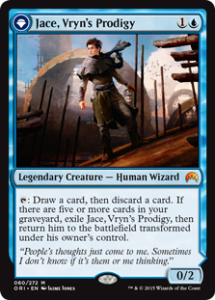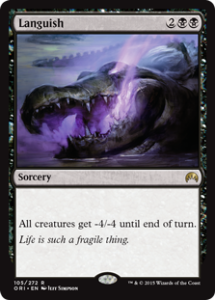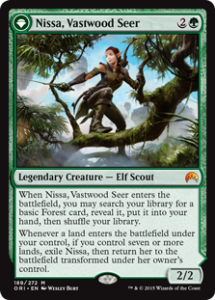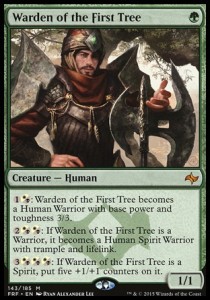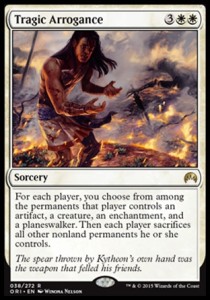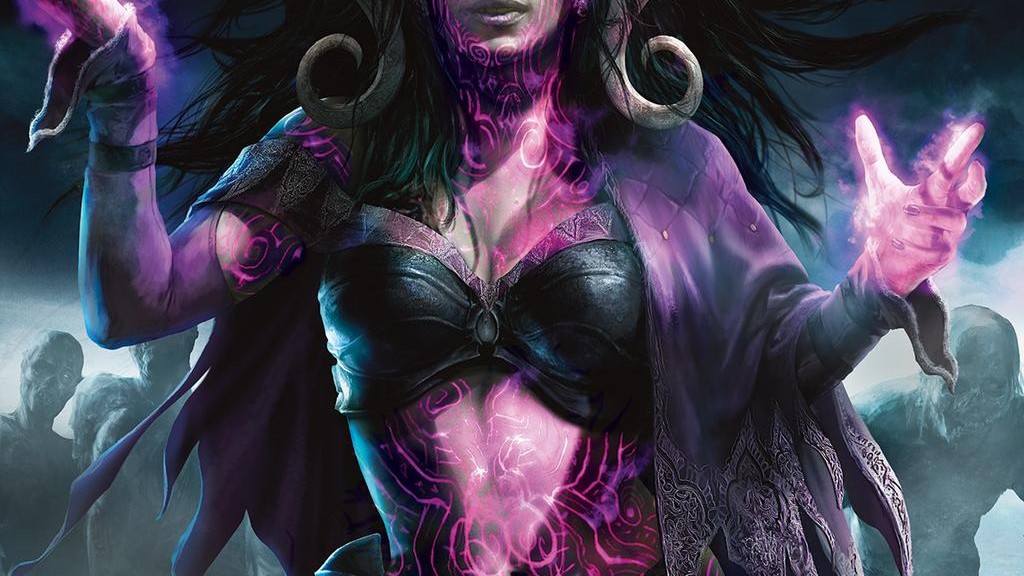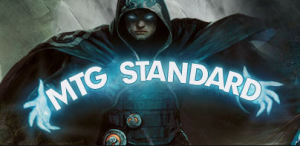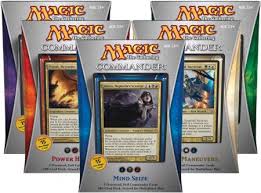Well this news is old by now. If you saw the earth-shattering announcement from Mark Rosewater:
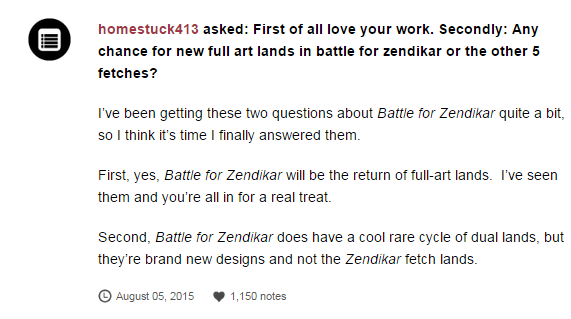
As you can imagine from the staggering 1,150 notes, there was a lot to be said about this announcement. No fetch land reprints!? What is Wizards of the Coast thinking!? Well I will tell you fine Magic playing fellows, they were thinking they didn’t need to be reprinted. Modern just received a huge infusion of fetch lands that were not even previously legal only a year ago.
I’m going to take a quick second before I continue to urge you to buy your Khans of Tarkir fetch lands. Don’t finish that one sweet EDH deck you’ve been working on for months. Don’t buy into the UR Mill deck that just won Grand Prix San Diego last week. Do yourself a favor and just get your set of lands. And then go out and tell your friends to get theirs too. There is no place these cards can go but up.
We now return to your regularly scheduled programming.
So yeah, Wizards was thinking that a fall set filled with lands that haven’t been printed since their original release in October of 2002 would be better. You know, like 13 years ago. So when you look at it like that ,there really isn’t a reason to complain about the Zendikar lands not being reprinted a mere 6 years later (Zendikar was released in October of 2009).
And then came the announcement that kind of felt like this. People panicked! What else are you supposed to do? They’re not getting printed! Well a product of nobody being prepared was really just a reasonable price for what Zendikar lands were available. And then quickly not available as people became prepared. The buyout was not silent but very deadly. Over night, as you may have noticed, every Zendikar fetch land has doubled in price. Is it going to stay that way? Probably not forever. Is it worth buying them now? Probably not anymore.
What a lot of people tend to forget is how powerful the Khans of Tarkir ones are in Modern. Many decks don’t actually need enemy colored fetch lands to function. There are one and a half exceptions to this. Jund is a deck that is pretty much unplayable without Verdant Catacombs. The main reason is you need to be able to fetch basic Swamp and basic Forest in order to play effectively around Blood Moon. But to be completely realistic, there is no way you’re able to afford the spells in Jund and not the lands. Any deck that plays 4 Tarmogoyfs is generally no longer shackled by the price of it’s lands.
The other land that sees a tremendous amount of play in modern from Zendikar is Scalding Tarn. This land is by far the most expensive and probably the most widely played. It’s also pretty replaceable. The reason fetch lands see such high play is the ability to fetch Ravnica shock lands but also to fetch basic lands to beat Blood Moon. If your deck has 1 Steam Vents in it then you can play Scalding Tarn, Arid Mesa, Misty Rainforest, Bloodstained Mire, Wooded Foothills, Polluted Delta, or Flooded Strand to fetch it. If those are you only concerns you have a ton of choices of lands to play! Unfortunately it is not that simple, you need access to appropriate basics. As a frequent fetcher of Islands, I can safely say that Scalding Tarn could be replaced with Polluted Delta, Flooded Strand, or Misty Rainforest while only sacrificing tiny percentage points in your matches. The reality is there is not a lot of situations you want to fetch basic Mountain and therefore any Island fetch land will suffice. Modern has long been a Steam Vents vs Overgrown Tomb format and the reality is you almost never need to fetch basic Mountain.
Where do we go from here? Just play other Island fetch lands in your decks. You can play Modern and you will not likely lose to your inability to fetch a basic Mountain. If you want to play a Green and Black deck, well I have no alternative to offer you other than to buy Verdant Catacombs. It sucks they’re really expensive but there is truly no other alternative. Other than you know, the decks that don’t play fetch lands…
Which brings us to our Daily Double
Well if you can’t buy cards, you can always sell cards, right? Now I think is time to get out of any short term specs you have for Magic Origins. I personally have been selling out of a ton.
You know what to do when you double on a spec? Get out while you still can! I picked up 3 Jace, Vryn’s Prodigy on Pucatrade for 1500 Pucapoints near release (about $15). I was able to sell them locally to a player for $30 per copy and plan to buy them back in October during Battle for Zendikar hype.
I sold these when the Pro Tour spike was in effect but I don’t think they’re terrible good to hold onto when they have a fair trade price of $9.25. I think it will quickly drop down to a $5 niche rare until it spikes another tournament. The risk that these fall before another spike is too high for my liking.
If you own these and don’t play Abzan there is not really any reason to keep them. Nissa is a $25 Borderland Ranger in a deck that is clogged at 3 more than a toilet at a frat party. With Hero’s Downfall, Deathmist Raptor, Courser of Kruphix, Abzan Charm, Anafenza the Foremost, and more at 3, there is little reason this will see enough copies to maintain it’s price. Similarly Languish has been described in Patrick Chapin’s podcast as a “Poor man’s drown in sorrow and a poor man’s crux of fate”. The reality of the spell is it’s unlikely to get played in huge enough numbers to continue to hold it’s price tag that is 4 times as much as Crux of Fate.
This card isn’t worth much but it’s worth more than nothing. It takes a lot for a card to be more than bulk in Khans of Tarkir due to the fetch lands taking up so much of the set’s value. Enjoy this short boost in value by trading your copies out.
Bull Market
There are some cards I think are still good pickups right now and have been acquiring them myself.
Low mana cost flexible mythic rare from a small set? This is practically the textbook definition of “could be worth a ton.” With the rotation of Elvish Mystic there is a real premium on good 1 drops that aren’t Red. It’s unlikely Abzan is going anywhere and with the rotation of Fleecemane Lion there are a lot less good things to do on turn 2. There are a lot worse places you could put your money than on this sub $4 card.
So this card is pretty close to bulk and I don’t foresee that staying that way in the future. The big difference between this and a lot of similar effects is that YOU choose everything. Is your best guy better than their worst guy? That’s pretty good because that’s the board state after this card. At a fair trade value of $0.69 there is little to lose by buying in now. It’s picking up a ton of steam on Pucatrade too. That has been a fairly good indicator that players value the card more than it’s current price. I also think the foil at $2ish is probably a good pickup as it does similar things to an EDH game.
And with this extra long edition of Grinder Finance I hope you all did great at Game Day and are ready for our first taste of Battle for Zendikar spoilers. I expect we will see some big reveals August 28-31st at Pax Prime.


